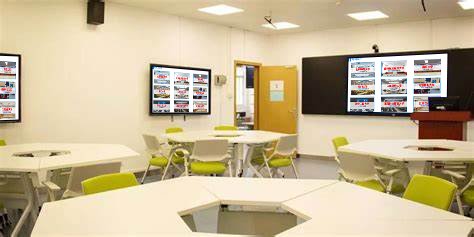Unlock Interactive Classrooms: Build Efficient Collaborative Classrooms with Wireless Screen Mirroring
In modern education, “interactive classrooms” have become key to enhancing teaching effectiveness. They break the traditional one-way indoctrination model, emphasizing student participation, collaboration, and real-time sharing. Wireless screen mirroring technology is precisely the powerful tool for building such an interactive environment.
This article will introduce how to use a professional wireless screen mirroring device to easily synchronize the screens of various smart devices in the classroom to the teaching large screen, thereby greatly enriching teaching methods and stimulating classroom vitality.
1. Why is Wireless Screen Mirroring a “Magic Tool” for Interactive Classrooms?
- Stimulate Participation: Students can easily share the screens of their mobile phones, tablets, or laptops with the whole class, quickly displaying assignments and sharing viewpoints, becoming the “protagonists” of the classroom.
- Promote Collaboration: Supports simultaneous screen mirroring by multiple students, facilitating work comparison and group plan discussions, and cultivating teamwork spirit.
- Ultra-Simple Operation: Teachers do not need complex wiring or suffer from the trouble of frequent plugging and unplugging of adapters. One click to mirror the screen makes the teaching process smoother.
- Strong Compatibility: Fully supports devices with different systems such as iOS, Android, Windows, and macOS. Whether teachers or students use any device, they can access seamlessly.
2. How to Build a Wireless Screen Mirroring Interactive Environment?
Deployment can be completed in just four steps:
- Deploy Hardware: Connect the main unit of the wireless screen mirroring device to the classroom projector or interactive large screen via an HDMI cable, and power it on.
- Switch Signal Source: Switch the signal source of the large screen to the HDMI port connected to the screen mirroring device.
- Connect to Network: Let teachers’ and students’ devices connect to the dedicated wireless network created by the screen mirroring device (or access the existing local area network of the classroom, depending on mode).
- Start Interaction:
- Teacher Side: Teachers can mirror teaching courseware and video materials to the large screen with one click at any time.
- Student Side: Students select the “Wireless Screen Mirroring” function on their own devices, find the name of the screen mirroring device and select it, then apply to share the screen. Teachers can manage screen mirroring permissions to ensure orderly classroom sharing.
3. Wonderful Application Scenarios of Wireless Screen Mirroring in Classrooms
- In-Class Q&A and Presentation: When teachers raise questions, students can directly mirror their problem-solving ideas and answers to the large screen, allowing the whole class to observe, correct, and learn together.
- Group Collaboration Report: After group discussions, push the final result plan to the large screen with one click for explanation and reporting, improving summarization and expression abilities.
- Work Appreciation and Mutual Evaluation: In courses such as art, composition, and design, works of multiple students can be displayed quickly, facilitating collective appreciation and mutual evaluation.
- Split-Screen Comparison Teaching: Simultaneously mirror the screen content of two different students on the large screen for comparison, intuitively analyzing differences and deepening the understanding of knowledge points.
Summary
Wireless screen mirroring technology has injected a soul into “interactive classrooms“. It is not just the disappearance of cables, but also the transformation of teaching thinking from “teacher-centered” to “student-centered”. Through convenient screen sharing, it builds a learning space with high participation, real-time feedback, and collaborative innovation, making every class full of infinite possibilities.
Embrace wireless screen mirroring, reshape classroom interaction, and make teaching truly “vibrant”.
